Key Takeaways
- Regular equipment maintenance is an important factor affecting the success of selling used construction equipment.
- The demand for construction equipment can fluctuate based on the overall health of the construction industry.
- Shipping costs and logistical complications can cause an equipment sale to fall through.
So, it’s time to sell some of your used construction equipment.
Naturally, you want to get the best price possible for your assets to maximize your return on investment and free up capital for future purchases.
But selling heavy machinery isn’t as simple as listing your old car online.
Without careful planning and consideration, you could undervalue your equipment, encounter legal complications, or face logistical nightmares.
This article will guide you through the process, highlighting seven crucial factors to consider before you put that sale listing up.
Let’s get started!
In this article...
Equipment Condition
Knowing the condition of the assets you’re planning on selling is key for both you and potential buyers.
After all, you want to be realistic when setting your price.
Good condition generally means you can command a higher price, but discovering any issues might mean having to lower your expectations.
Let’s take a look at what should you focus on when inspecting your equipment.

The first thing to check is the overall physical condition, which includes key components like the engine, hydraulics, and transmission.
Having accurate diagnostic data and operating hours is important, too, as they allow potential buyers to assess the equipment’s use and estimate its remaining lifespan.
Once you have all this information, transparency is key.
Regardless of how you choose to sell your equipment, you should list out the full condition details.
Spencer McCarty, a heavy equipment broker, says that sellers often skip this step when creating sales listings.

You want to provide enough visuals of the equipment and honest, detailed descriptions.
Think about it: would you buy any piece of equipment without seeing photos or knowing its operating hours? Probably not.
So put yourself in the shoes of a buyer and check out some of the used equipment listed for sale on platforms like Bobcat.
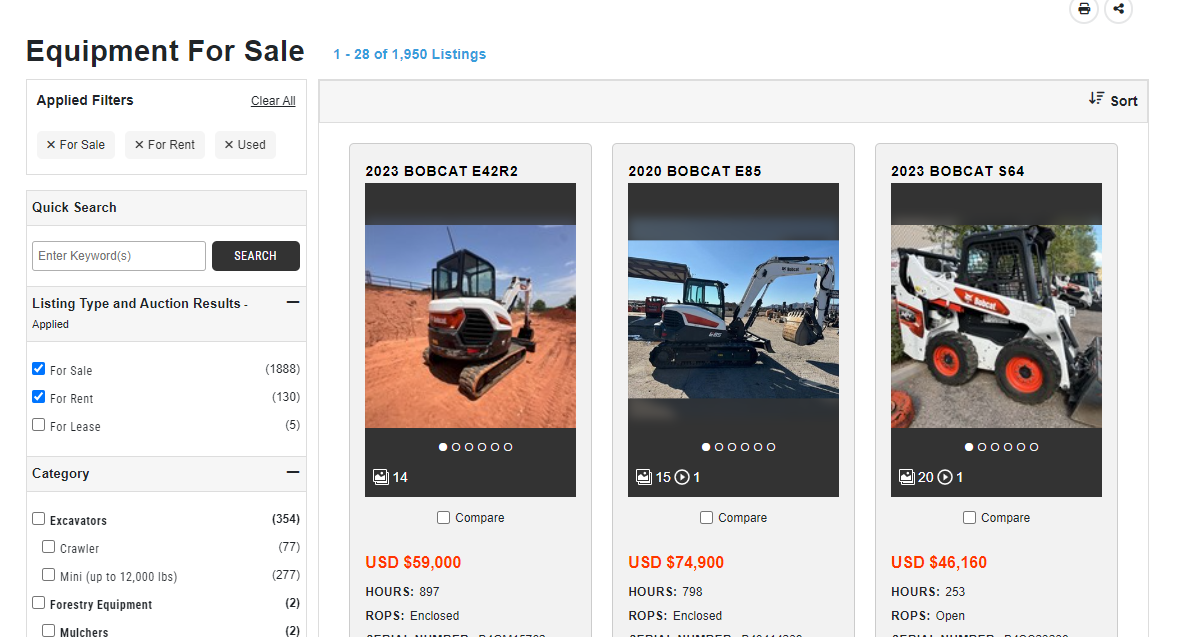
Think about which listings you’d trust and consider, and which ones you’d skip based on the equipment details included by the seller.
Use that to guide your own process of creating listings.
The key is to be upfront and thorough, which will build trust with potential buyers.
Maintenance History
One aspect of equipment condition we wanted to dedicate a whole section to is maintenance history.
A solid maintenance history shows buyers that equipment has been well-cared for and is likely to be in better working order.
In fact, a 2023 research paper aiming to find the factors affecting the resale value of construction equipment found that regular maintenance is the third most important factor.
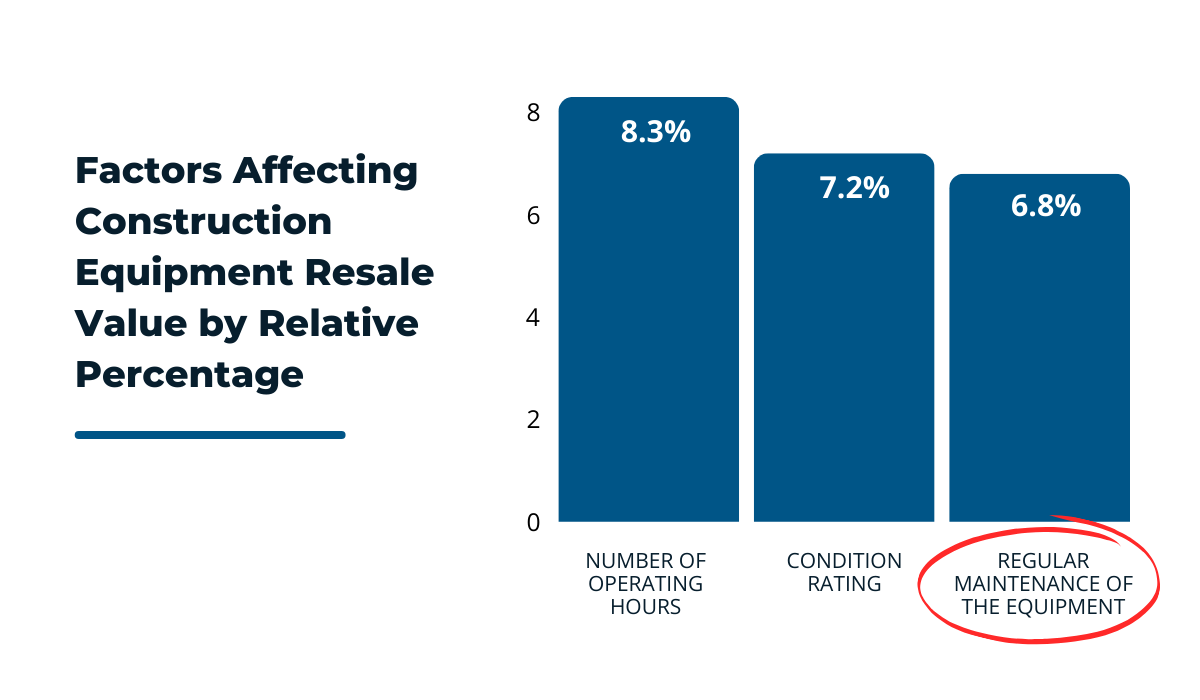
Now imagine maintaining your equipment perfectly and then failing to present a thorough maintenance history to buyers.
That really won’t be very reassuring to them, and they’d probably outright refuse to proceed with the sale or at least try to negotiate a lower price.
So, you need to collect, organize, and present key maintenance history documents.
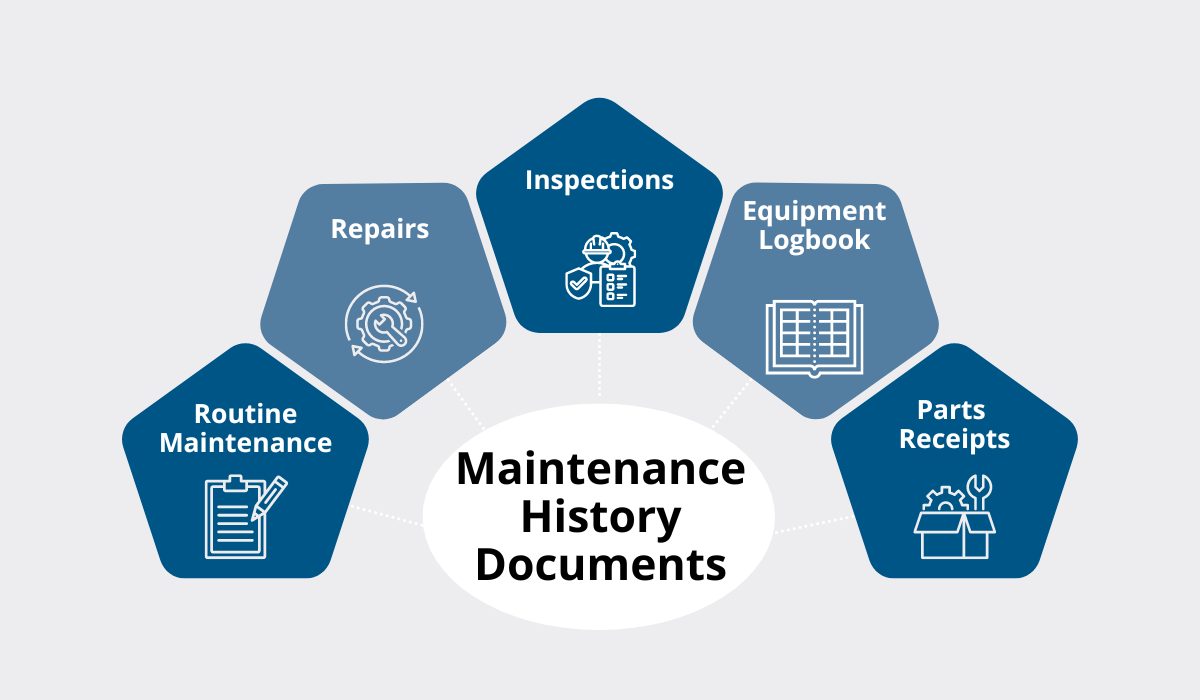
The most important records will be the routine maintenance records and inspection documents.
Repair history is also of paramount importance, as it shows buyers that any significant issues have been addressed and that the equipment is less likely to experience unexpected breakdowns.
Since keeping these records is so important, you might consider using dedicated Computerized Maintenance Management Systems (CMMS) to do so.
Here’s what such software can look like.
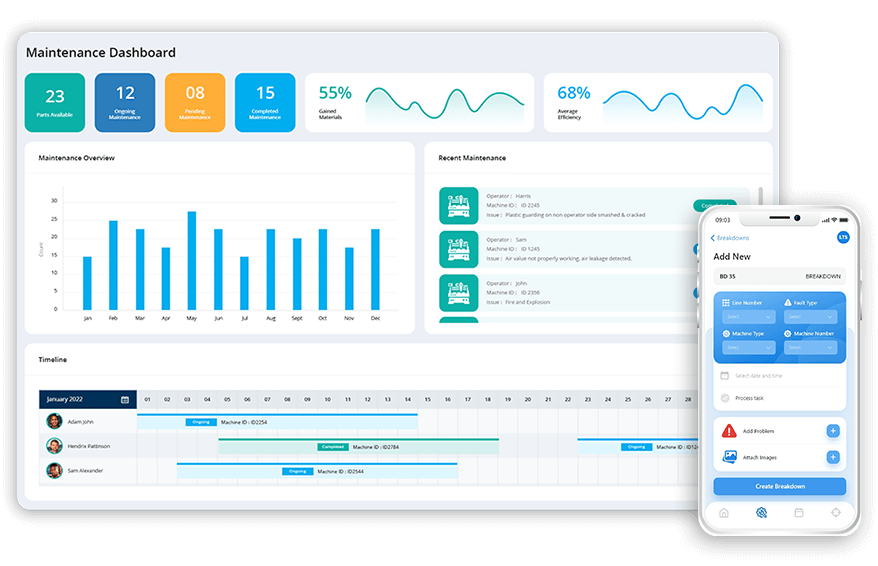
CMMS systems help you track maintenance schedules, record repairs, and generate reports, making it easier to manage and present a comprehensive maintenance history to potential buyers.
Overall, a well-documented maintenance history is a powerful selling point that can significantly increase the value of your equipment and attract serious buyers.
Brand Reputation
As you’re probably well aware, equipment from known and reliable brands can potentially retain its value better and attract more buyers.
So, selling equipment from known brands can mean both quicker sales and the ability to ask for higher prices.
You can see some of the most reputable construction equipment manufacturers below.
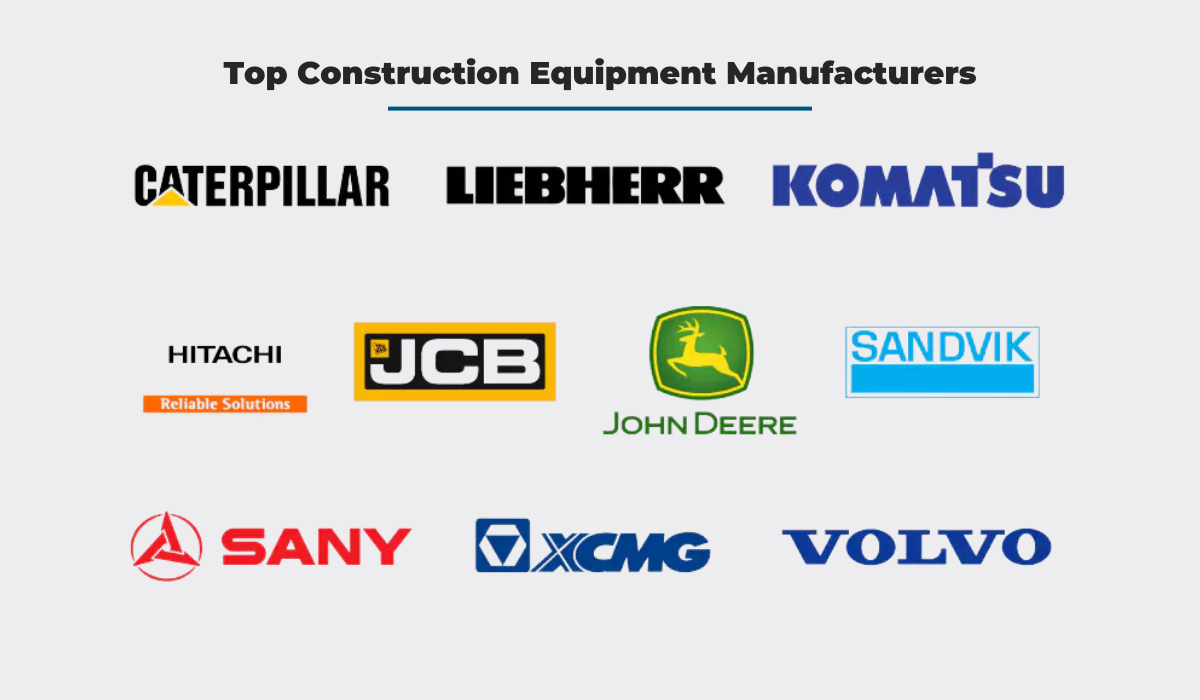
If a particular equipment model has a great reputation, you could even see a bidding war if you’re selling it at an auction, which can drive up the final price.
Yes, when it comes to selling used construction equipment, brands are important.
But how can you capitalize on this fact?
Well, for starters, you want to research your equipment’s brand reputation.
If it’s manufactured by a highly respected brand like Caterpillar or Komatsu, this will be easy.
But even if it’s a lesser-known brand, you want to gather information like online reviews, company history, and market share to get a better picture of their standing in the industry.
Next, you want to familiarize yourself with the reputation of the specific equipment model you’re selling.
For example, say you found this quote from Richard Littler, president of Littler Machinery, about CAT’s K Series compactor:
“The machine needs to help ease the operator’s working day. These K Series compactors are very modern units. The operator environment, serviceability, and ease of use set them apart.”
And, commenting on the fuel efficiency, he said:
“After just two or three months, they told us the fuel savings were phenomenal… something like half the fuel costs, maybe more.”
You could then use these points—or even the quote itself—in your listing to attract potential buyers.
The bottom line is that showcasing the positive aspects of the brand and model can increase the perceived value of your equipment and make it more appealing to buyers.
Market Demand
Another crucial factor to consider when trying to sell your equipment is understanding market demand.
This applies to both the demand for specific equipment models and the overall demand for construction equipment in general.
In terms of equipment models, you can explore top-selling equipment lists from reputable sites like EquipmentWorld.
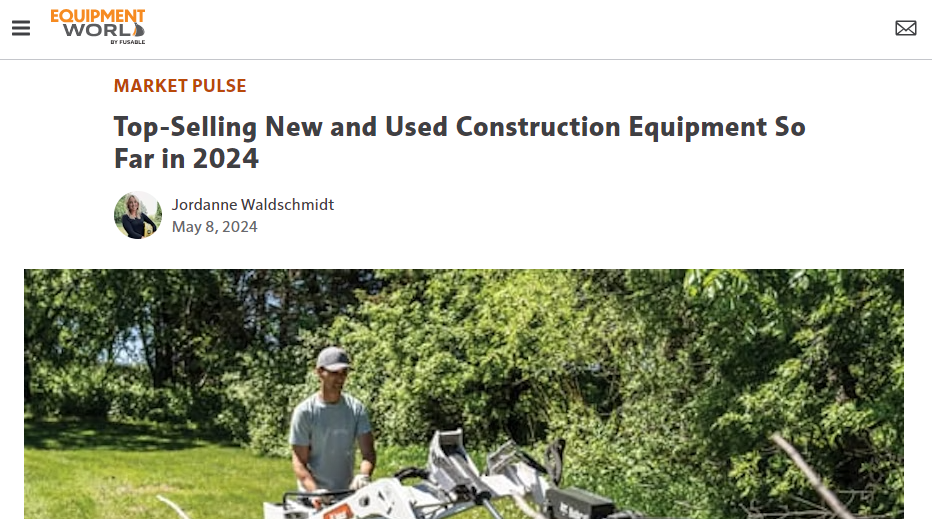
These lists can give you valuable insights into which models are currently in high demand, helping you gauge the potential interest in your own assets.
Similarly, looking at past auction results can reveal pricing trends, with pages like Construction Equipment Guide providing rich equipment auction data for the past 10 years.
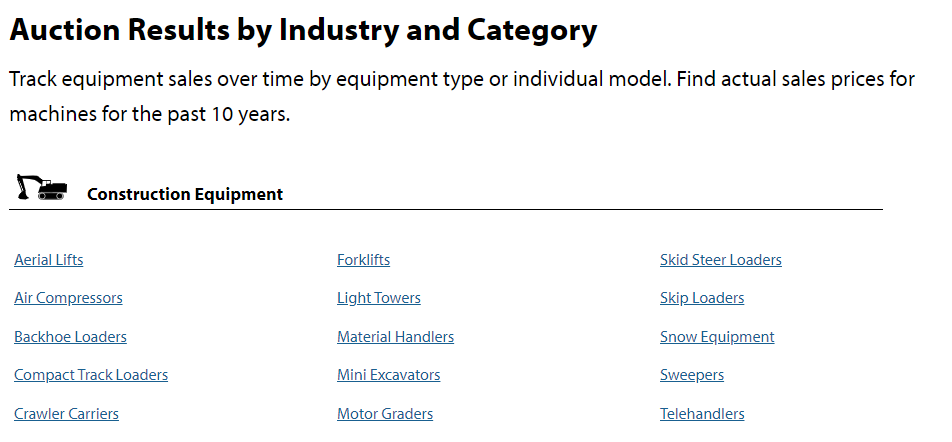
There, you can see the general demand for specific equipment and any fluctuations during certain periods that may point to seasonality or increased demand.
On a broader level, you also need to consider the overall health of the construction industry.
Consider the construction confidence indicator for the Euro Area below.
It measures industry feelings and expectations for future construction activity.
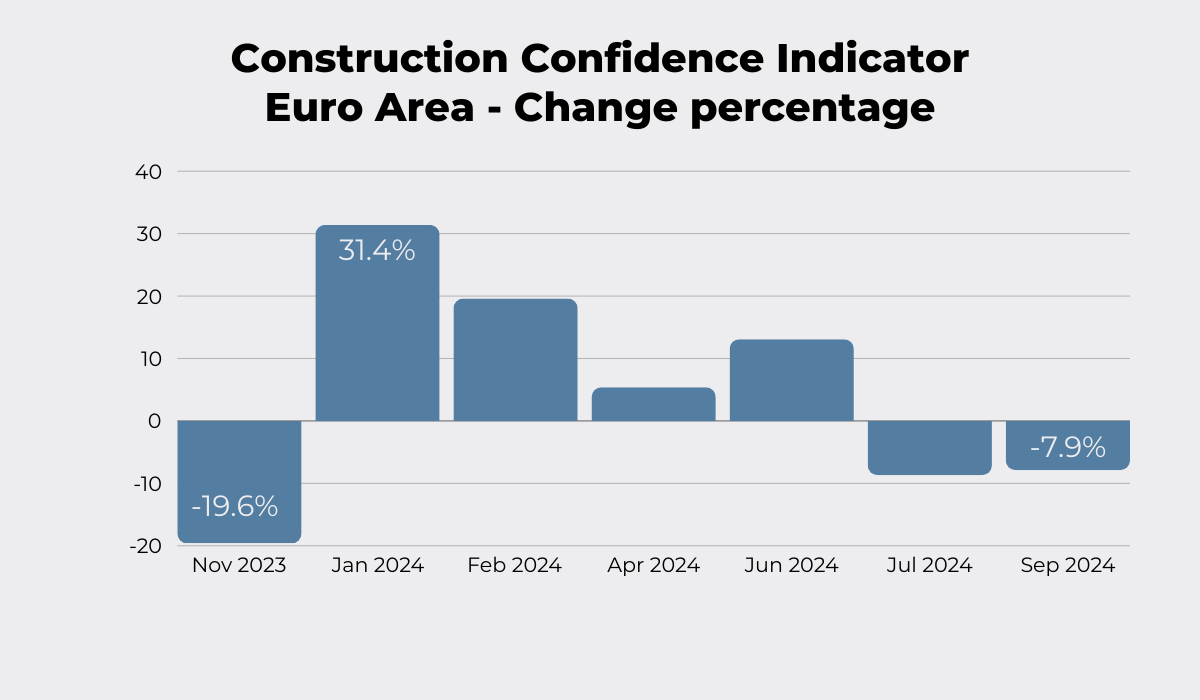
As you can see, January 2024 saw a 31.4% positive change percentage, reflecting industry optimism and potential increases in construction activity and equipment demand.
This period would have been favorable for equipment sales due to the positive sentiment.
Conversely, September 2024 had a negative change percentage, hinting at a slowdown in the industry and potentially lower equipment demand.
By aligning your selling efforts with periods of high demand and positive industry outlook, you can maximize your chances of securing a great deal.
Selling Method
Once you’ve taken care of all the previous aspects, you’re ready to make a sale.
A big decision here is the actual selling method you’ll use.
The choice of selling method matters because it can significantly impact the final selling price, the speed of the sale, and the overall effort required from your end.
The table below compares three of the main methods: private sales, selling through equipment dealers, and selling at equipment auctions.
| Method | Speed | Price | Convenience | Buyer Reach | Best For |
|---|---|---|---|---|---|
| Private Sales | Slowest (weeks or months) | Highest | Medium, seller handles process | Local/online, but smaller | Sellers seeking max price, willing to wait |
| Dealers | Medium | Lower, due to dealer margin | Very high, dealer handles all | Large dealer networks | Sellers wanting hassle-free, quick payment |
| Auctions | Fast (days) | Lower, due to bidding | Very high, minimal effort | Large, global audience | Sellers needing a quick sale |
Selling equipment through private sales can offer the best price, but requires an effort in advertising, screening buyers, and negotiating.
On the other hand, dealers offer convenience, but may yield a lower price due to their margin.
Auctions represent the middle ground in terms of benefits.
They’re easy to set up, and they reach a wide audience of potential buyers.
However, they can also result in a lower-than-expected price.
For example, auctions for popular pieces of equipment can attract a lot of “watchers.”
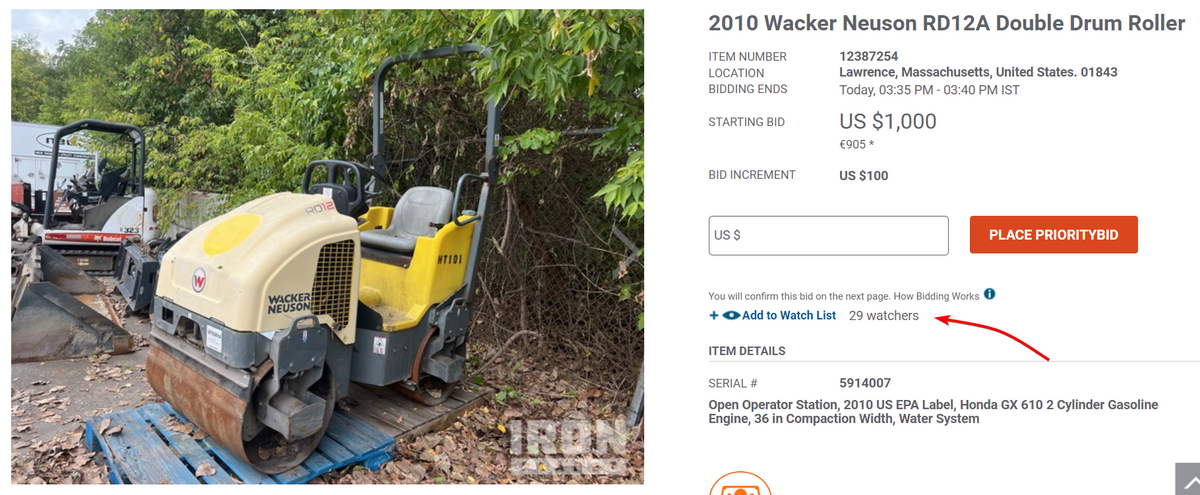
Auction watchers are potential buyers who monitor the auction and can often wait until right before the auction ends and bid as little as possible to try and get the equipment at the lowest price.
Overall, the right sales method will depend on your needs and priorities.
Carefully consider the pros and cons of each selling method before making a decision and choose the one that best aligns with your specific circumstances.
Transfer of Ownership
Once an initial deal has been made, you need to factor in the transfer of ownership.
As a seller, you need to be careful during this process to avoid any legal disputes or complications later.
A clear and proper transfer of ownership protects both you and the buyer and ensures a smooth transaction.
Let’s take a look at the simplified process of ownership transfer outlined below.

In general, you’ll start by taking care of all the necessary paperwork from both your end and the buyer’s end.
Then, the buyer should inspect the condition and all other details of the equipment to ensure that it matches the description provided in listings or on auction sites.
If all is well, the transaction can be completed.
This usually involves the buyer making the payment as agreed and you, as the seller, handing over the equipment.
Then, the sale can be finalized by registering and recording the sale and the change of ownership.
The most important and initial step is taking care of the paperwork, so let’s briefly touch on this.
The three main types of paperwork that you’ll need to take care of are:
- Bill of sale
- Title transfer
- Loan or lien release
The bill of sale is a legal document that records the sale of the equipment and includes details such as the names of the buyer and seller, the sale price, and the date of the sale.
The title transfer document officially transfers the ownership of the equipment from the seller to the buyer.
Also, if the equipment is under a loan or lease, you must provide a loan or lien release document to show that the debt has been paid off.
If you’re in the US, you must also file a UCC-3 termination statement.
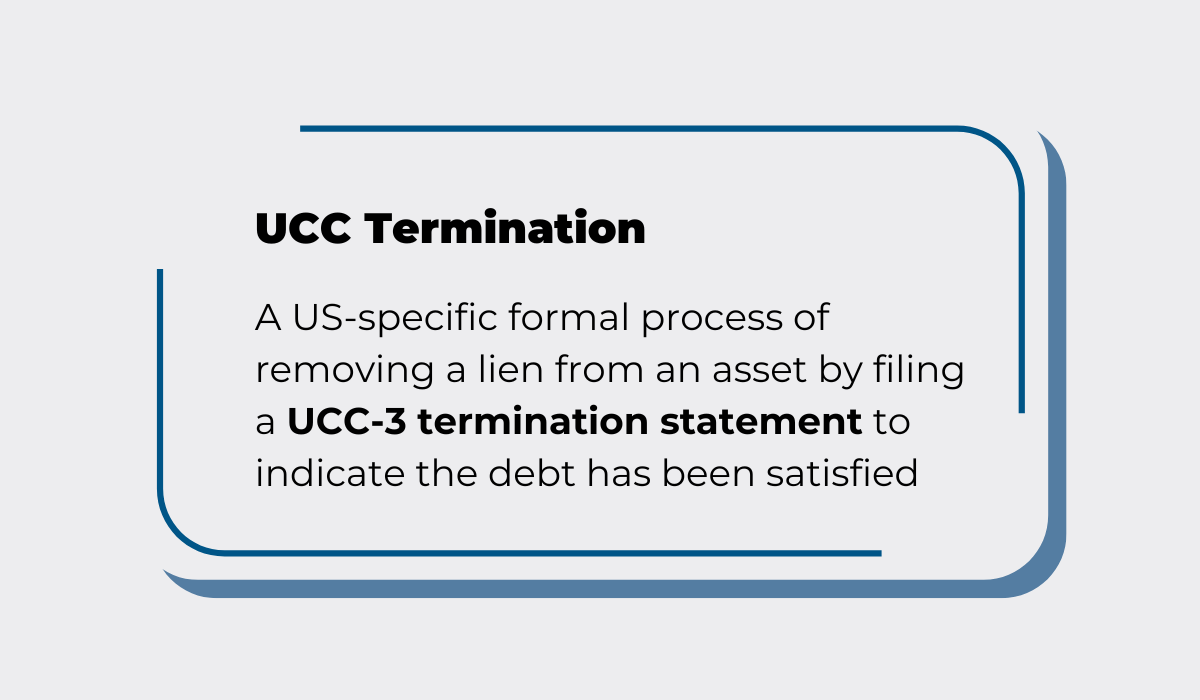
This statement is filed with the relevant authorities to terminate any previous financing statements related to the equipment, thereby ensuring that there are no conflicting claims on the asset.
All in all, by ensuring a clear and legally sound transfer, you protect yourself from potential liabilities and provide the buyer with confidence in their purchase.
Transportation of the Equipment
Finally, there’s equipment transportation to consider, which can sometimes make or break the sales process.
As heavy transport specialist William Thomas explains, there are various aspects to consider when transporting heavy equipment.
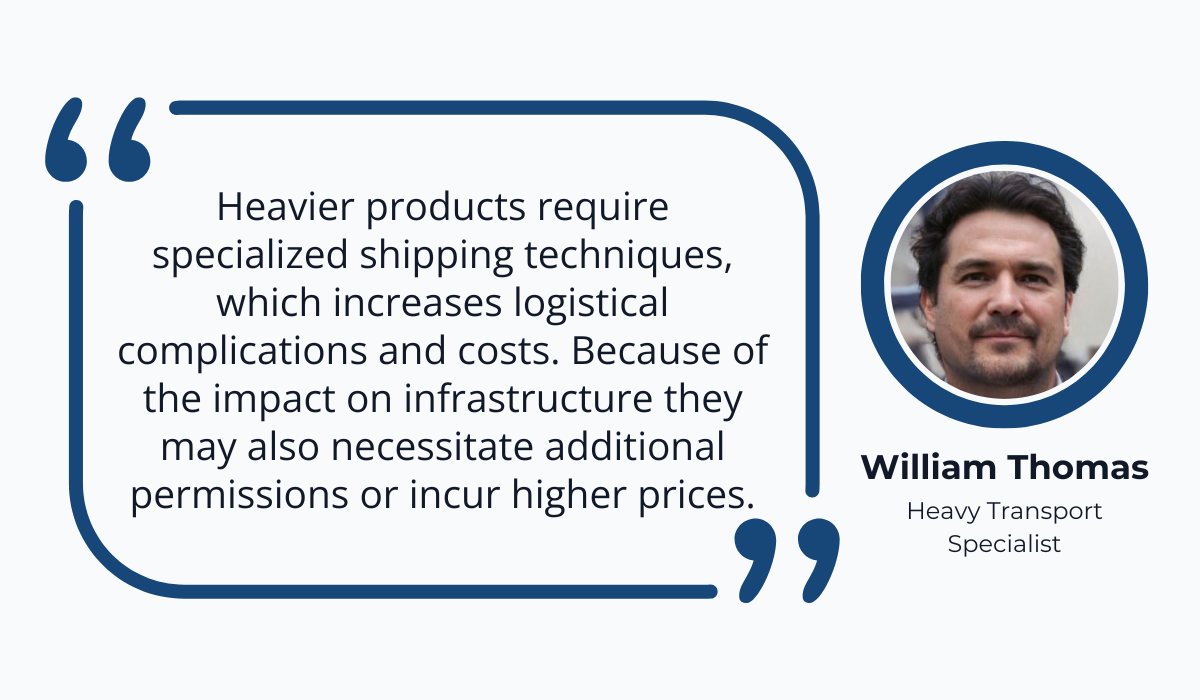
More specifically, you need to consider the following factors:
- Equipment size and weight
- Shipping method (truck, rail, sea)
- Special handling requirements (e.g., for fragile or oversized equipment)
- Permits and regulations (which vary by location)
- Insurance requirements
- Fuel surcharges
- Delivery time frame
These factors need to be considered right from the beginning of the sales process, when you’re creating your listing.
Why?
Because shipping costs and logistical complications can be a big deterrent to buyers, especially when you don’t provide the necessary information or assistance.
You want to include your equipment’s location and calculate rough shipping costs to include in your listing.
This way, potential buyers can factor transportation costs into their decision-making, leading to more informed offers and fewer surprises down the line.
If you’re selling a particularly expensive or specialized piece of equipment, you can even help with the logistics by getting quotes from shipping companies or offering to coordinate the transportation on behalf of the buyer.
That way, you can expand your buyer pool to include more distant buyers who might otherwise be hesitant due to the complexities of transporting the equipment.
Also, consider options offered by auction sites like Ritchie Bros, which have partnered with shipping vendors.
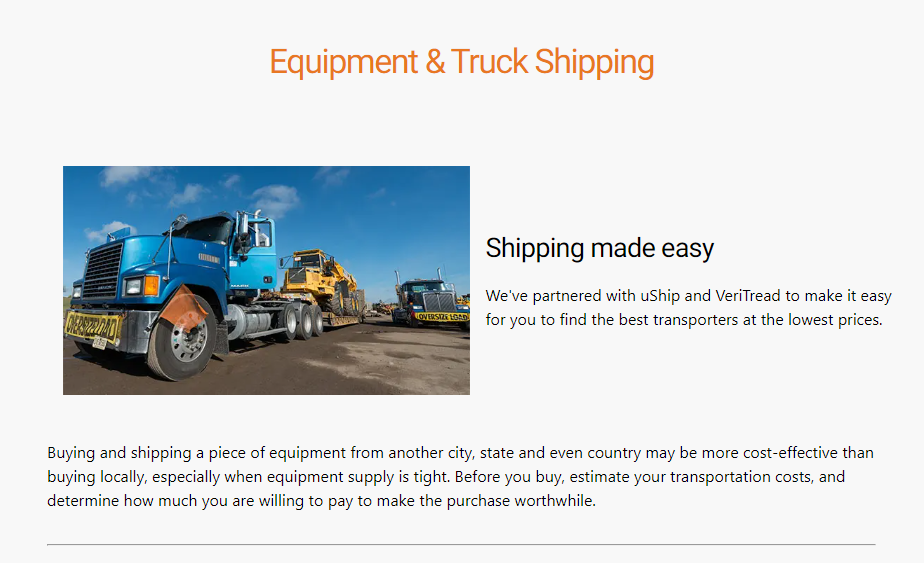
Exploring and utilizing these platforms can improve the logistics experience for both you and potential buyers, as well as prevent sales from falling through because of transportation challenges.
By proactively addressing transportation considerations, you can streamline the selling process, attract more buyers, and ensure a smoother transaction for everyone.
Conclusion
With that, we end our breakdown of some key factors to consider when selling construction equipment.
We’ve explored important considerations like the condition of your assets and current market demands, which significantly impact your selling price.
But we also covered practical aspects like choosing the right selling method, handling ownership transfer, and arranging transportation.
All of these factors are essential to consider, and by now, we believe understand them better.
You want to use this information to your advantage, approach the sales process strategically, and ensure you get the best possible return on your valuable assets.
With careful planning and execution, you can turn your used equipment into a valuable source of capital.





